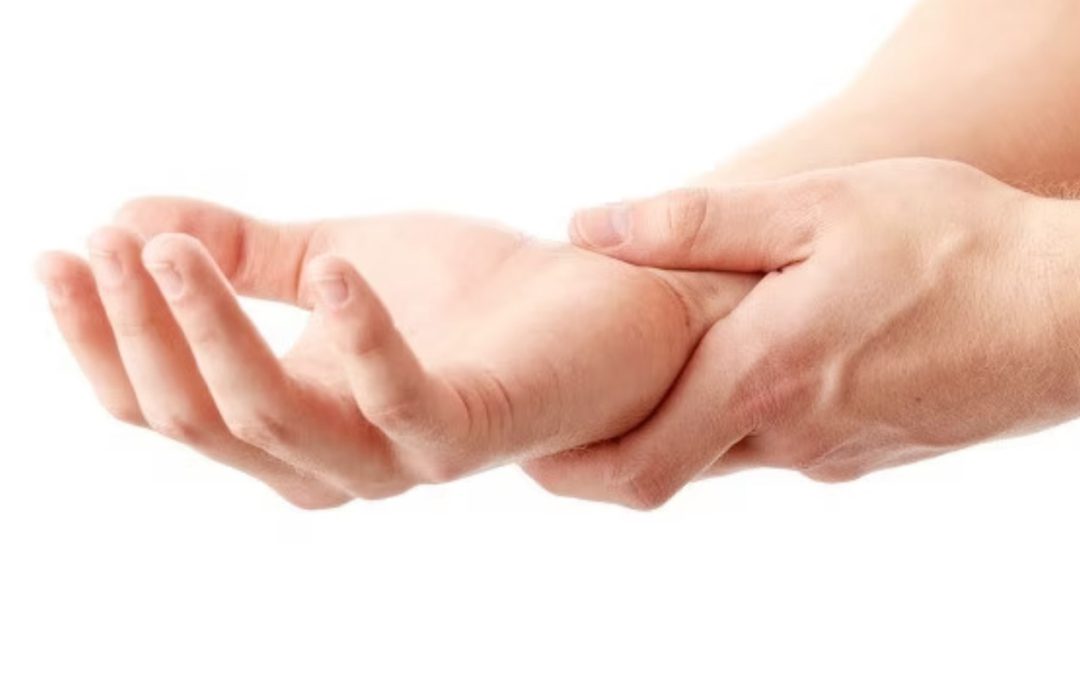Numbness in fingers
Hand numbness can be a symptom of many causes, which run from mild and temporary to serious medical conditions. However, the most common cause is damage or compression of the nerves in the hand (peripheral neuropathy).
Diseases affecting the peripheral nerves, such as diabetes, also can cause numbness. However, diabetes usually causes numbness in the feet first.
Uncommonly, numbness may be caused by problems in the brain or spinal cord. When this happens, arm or hand weakness or loss of function also occurs. Numbness alone isn’t usually associated with potentially dangerous disorders, such as strokes or tumors.
The most common conditions which can cause the numbness in the fingers are carpal tunnel and cubital tunnel syndromes.
Carpal tunnel syndrome
Carpal tunnel syndrome occurs when the tunnel becomes narrowed or when tissues surrounding the flexor tendons swell, putting pressure on the median nerve.
Carpal tunnel syndrome is a set of symptoms (e.g. “pins and needles”, numbness, weakness, loss of feeling) that are caused by compression of the median nerve (pressure on the nerve) at the wrist. The median nerve supplies sensation to the thumb, index, middle and inner part of the ring finger. Early on, symptoms can often be relieved with simple measures like wearing a wrist splint or avoiding certain activities. If pressure on the median nerve continues, it can lead to nerve damage and worsening symptoms. To prevent permanent damage, surgery to take pressure off the median nerve may be recommended for some patients.
In most patients, carpal tunnel syndrome gets worse over time, so early diagnosis and treatment are important.
What are the symptoms of carpal tunnel syndrome?
Symptoms usually begin slowly and can occur at any time. They may include:
- Numbness, tingling, burning, and pain—primarily in the thumb and index, middle, and ring fingers
- Tingling is often worse at night or first thing in the morning. It may be provoked by activities that involve gripping an object, for example a mobile telephone or newspaper, especially if the hand is elevated
- Occasional shock-like sensations that radiate to the thumb and index, middle, and ring fingers
- Pain or tingling that may travel up the forearm toward the shoulder
- Weakness and clumsiness in the hand—this may make it difficult to perform fine movements such as buttoning your clothes
- Dropping things—due to weakness, numbness, or a loss of proprioception (awareness of where your hand is in space)
Cubital tunnel syndrome
Cubital tunnel syndrome, also known as ulnar neuropathy, is a condition that happens when the ulnar nerve, which passes through the cubital tunnel (a tunnel of muscle, ligament, and bone) on the inside of the elbow, is injured and becomes inflamed, swollen, and irritated. This can cause tingling, pain and numbness, particularly in the little finger. The ulnar nerve provides sensation to the little finger and part of the ring finger, and power to the small muscles within the hand, therefore numbness or tingling of the little and ring fingers are usually the earliest symptom.
Early on, symptoms can often be relieved with simple measures like wearing a splint, resting hands, physiotherapy or avoiding certain activities. If pressure on the ulnar nerve continues, it can lead to nerve damage and worsening symptoms. To prevent permanent damage, surgery to take pressure off the ulnar nerve may be recommended in severe cases.
What are the symptoms of cubital tunnel syndrome?
Symptoms usually begin slowly and can occur at any time. They may include:
- Numbness, tingling, burning, and pain—primarily in the little and ring. The symptoms are often felt during the night, but may be noticed during the day when the elbow is bent for long periods of time
- Occasional shock-like sensations that radiate to the little and ring fingers
- Pain or tingling that may travel up the forearm toward the shoulder
- Weakness, clumsiness in the hand and difficulty with finger coordination (such as typing or playing instruments) due to muscle weakness in the hand and arm
- Aching pain on the inside of the elbow
- In severe cases sensation may be permanently lost, and some of the muscles in the hand and base of the little finger may reduce in size
How is numbness in hands diagnosed and treated
The pattern of symptoms can help determine if the cause is pressure on a nerve, a disease, medications, or another condition. For many of these disorders, a thorough history and physical exam are most important to narrow down or make a diagnosis. Further tests such as an x-ray, an MRI, nerve tests (such as EMG) or ultrasound may be used to help confirm a diagnosis.
Specific treatment recommendations can be made by your GP or hand surgeon once you are diagnosed. You may also be referred to other specialists such as a neurologist, rheumatologist, pain management specialist, or other health care provider.
Some treatments may require a surgery such as carpal tunnel syndrome or cubital tunnel syndrome to prevent nerve damage, when conservative management doesn’t help.

Recent Comments